Cloud Forest Tricksters
Of the 300,000 estimated insects in Costa Rica, two groups of insects get my vote for celebrity status. They are the katydids (bush crickets) and phasmids (stick insects, the subject of the next blog). Found all over the world except in Antarctica, they are colorful, charismatic, and masters of disguise. Most of the species live in the tropics.
Katydids (Tettigoniidae)
Katydids appears similar to their grasshopper relatives, but with super long antennae many times its body length. They are tree-living omnivores and are the major nocturnal noise maker in the tropics. The song is a multisyllabic “ka ty did she did“)” mating call, generated by the males’ stridulation between the forewings. Ranging from 5 – 130mm in size, they feed on plants, insects, insect eggs and even small lizards. It is no coincidence that their coloration often matches parts of plants precisely, rendering them nearly invisible in their diurnal activities, but their tricks involve more than colors, as revealed in the examples below:
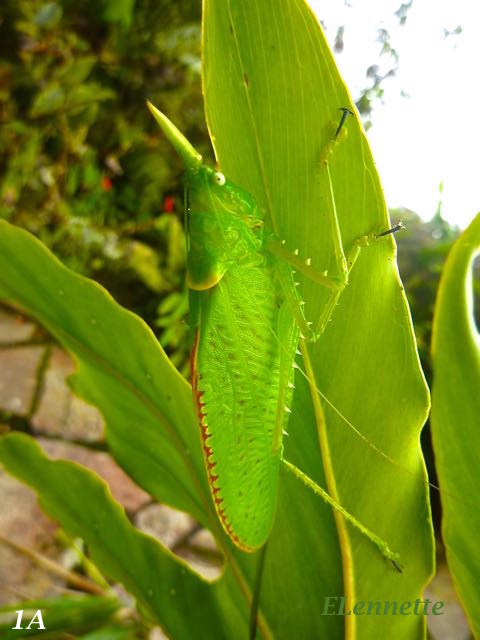
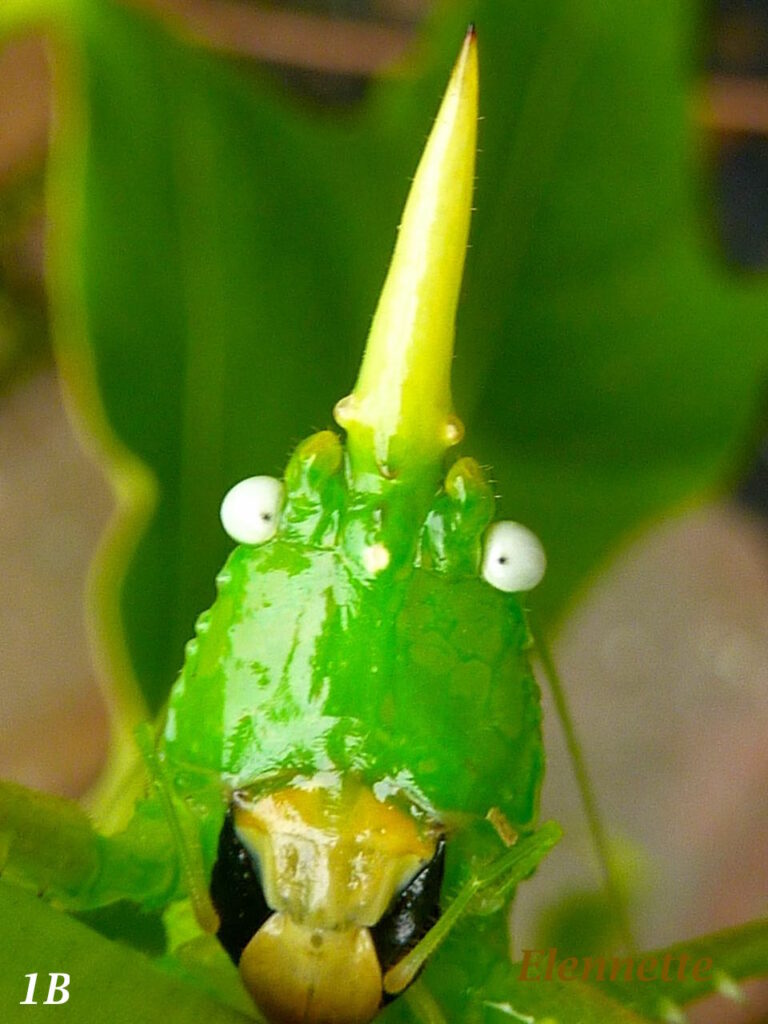
Fig 1A Katydid Copiphora rhinoceros (8cm). Katydids can move at lightning speed to catch its preys. Fig 1B The unihorn between its eyes is a defense mechanism against predators. So are its strong and sharp mandibles.
For comparison, grasshoppers are evolutionary older relatives of katydids (250 vs 23-66 million yrs). They have more powerful hind legs and shorter antennae than katydids (Fig 2). Grasshoppers can jump 20 times its body length. In human terms, that would be equivalent to the length of a football field. Mostly ground dwellers, they are strict vegetarians. Under certain conditions, they grow to enormous population density and form swarms. With their voracious appetite, they can become devastating crop pests. Grasshoppers also stridulate to attract potential mates. However, unlike katydids’ wing-to-wing grating, grasshoppers rub the hind legs against their wings.
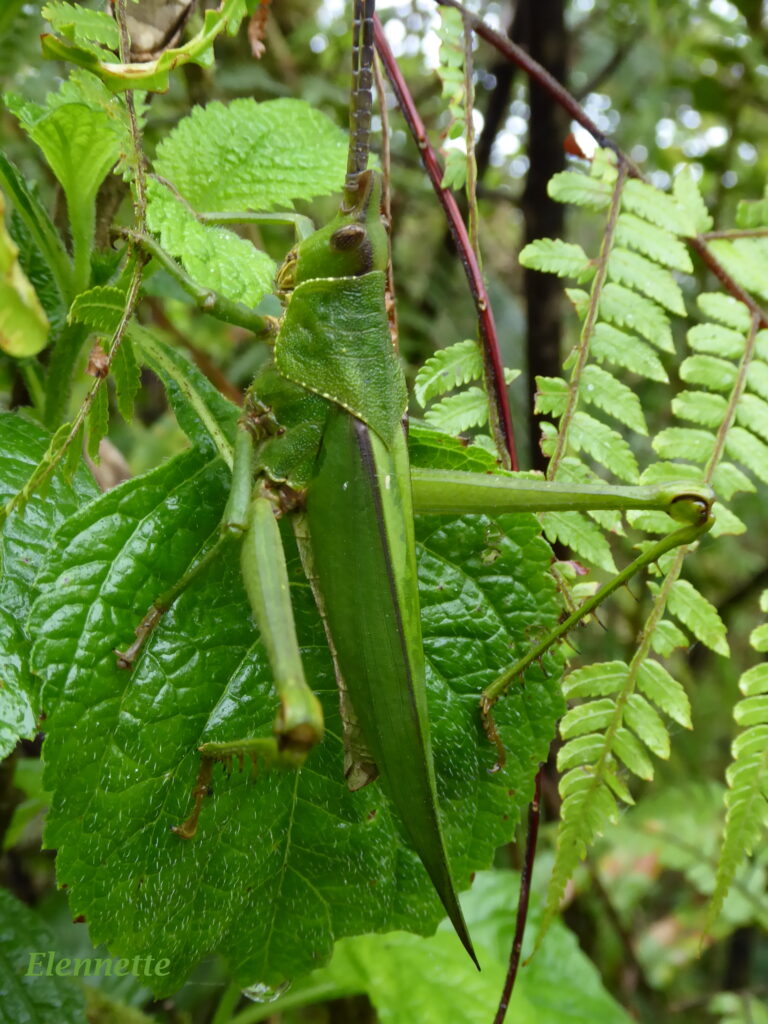
Fig. 2 An unidentified grasshopper at Nectandra.
Life Cycle
During courtship, the male katydid sings and offers an unusual nuptial gift to the females. The gift consists of a proteinaceous, gelatinous gland attached to the sperm sac (Fig 3). Receptive females consumes the protein rich gift after mating. This nuptial meal increases, not the fertility (number of offspring) of the female, but the exclusivity of paternity and the fitness of the offspring.
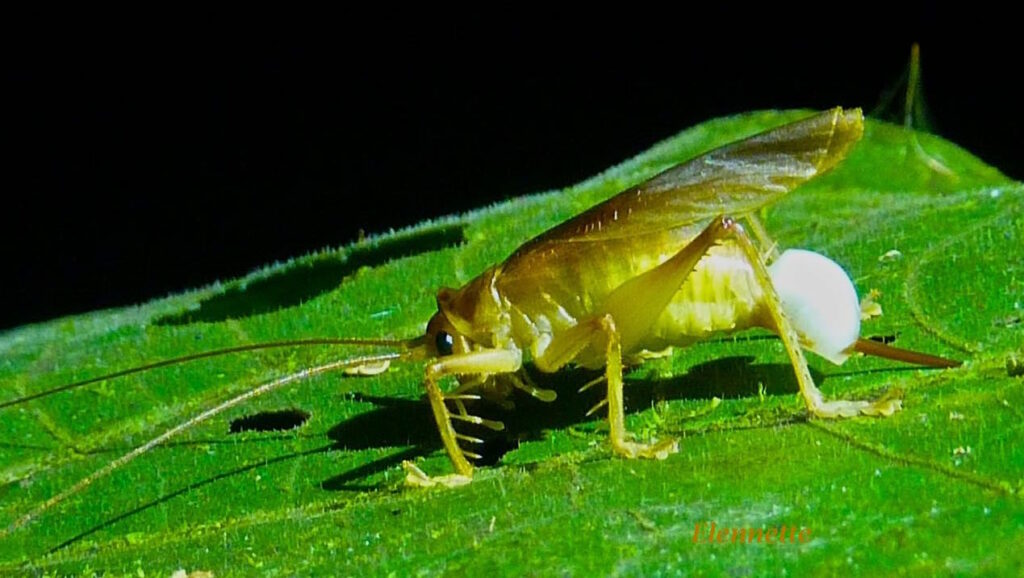
Fig 3. White spermatophylax on a male katydid trying to attract the opposite sex at Nectandra.
Katydid life cycle start with the eggs deposited on twigs, Fig 4. The eggs are laid in regular overlapping rows.
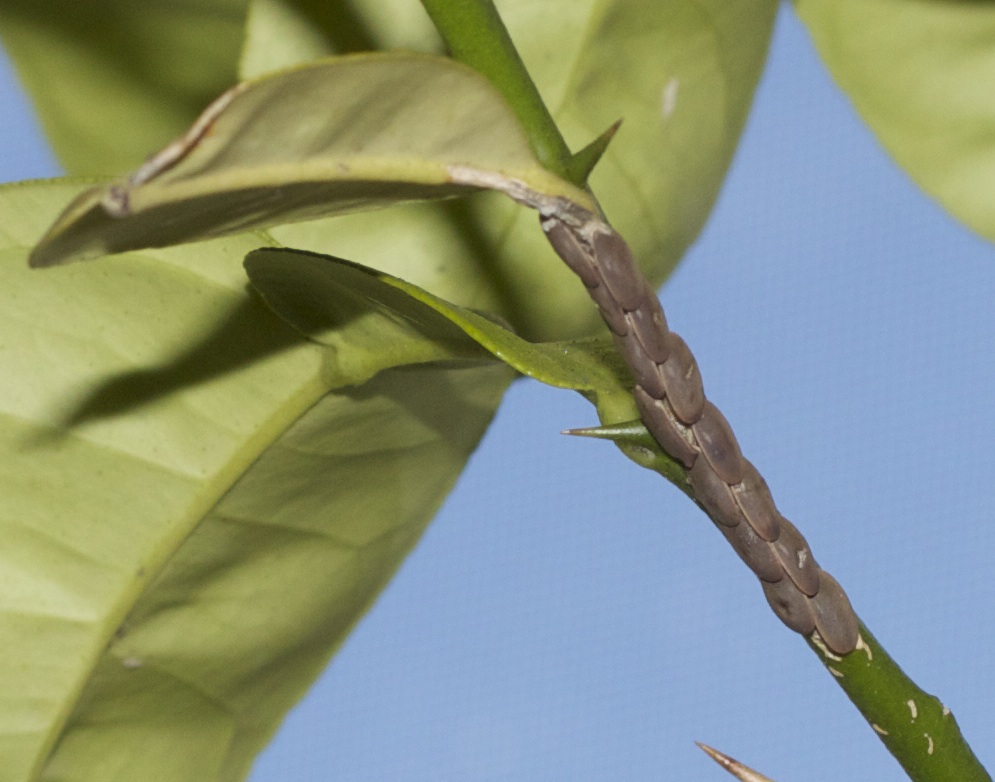
Fig. 4 Katydid eggs on a branch. Photo credit. Seph. Wikicommons
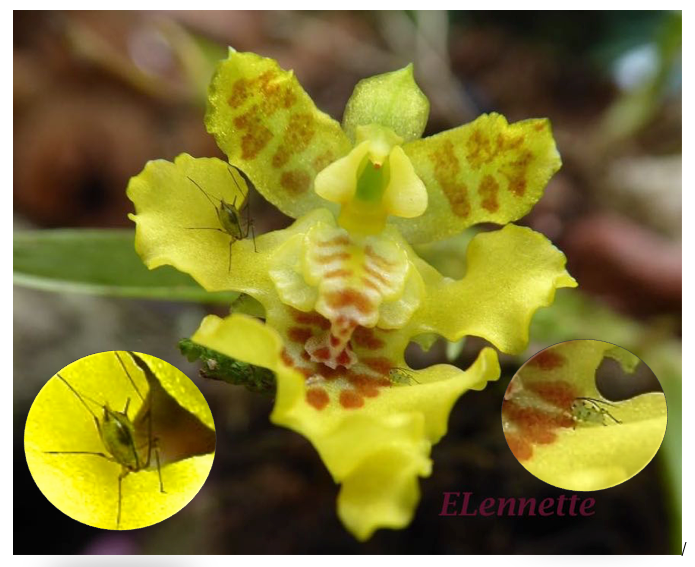
Fig. 5 Two katydid juveniles (magnified in inserts) at different life stages on Oncidium orchid.
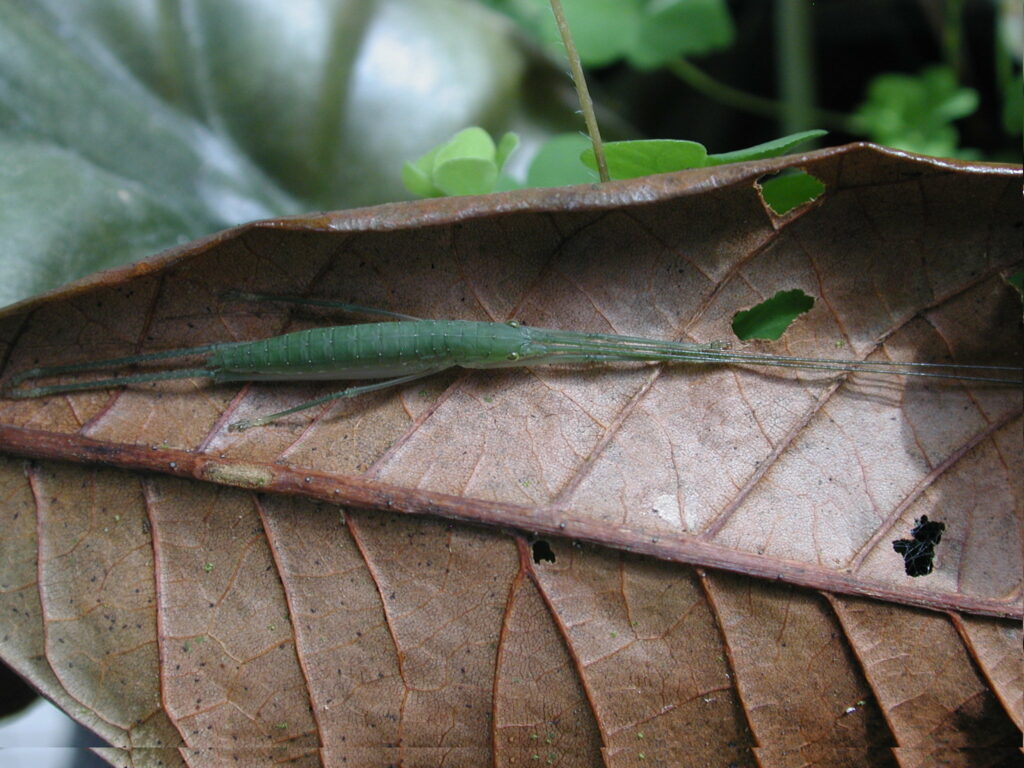
Fig 6 Wingless juvenile katydid.
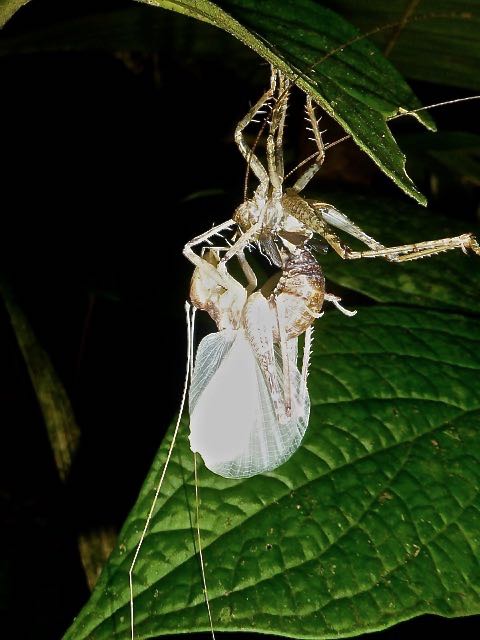
Fig 7 Final molt of a katydid. Note the winged, mature katydid emerging from the wingless old molt.
The wingless hatchlings (Fig 5 & 6) have the appearance of the adults. They remain wingless through the 4-5 molts until they reach adulthood at the last molt Fig. 7.
Crypticity
The most remarkable katydid features are their cryptic leaf-shaped forewings with color, textures and shapes indistinguishable from their leafy hiding places. Their wings mimic the venation and coloration of green or dry foliage. Katydids can fly but prefer to stay motionless to avoid predation. Below are examples of several masters of disguise (Fig 8A – 8E).
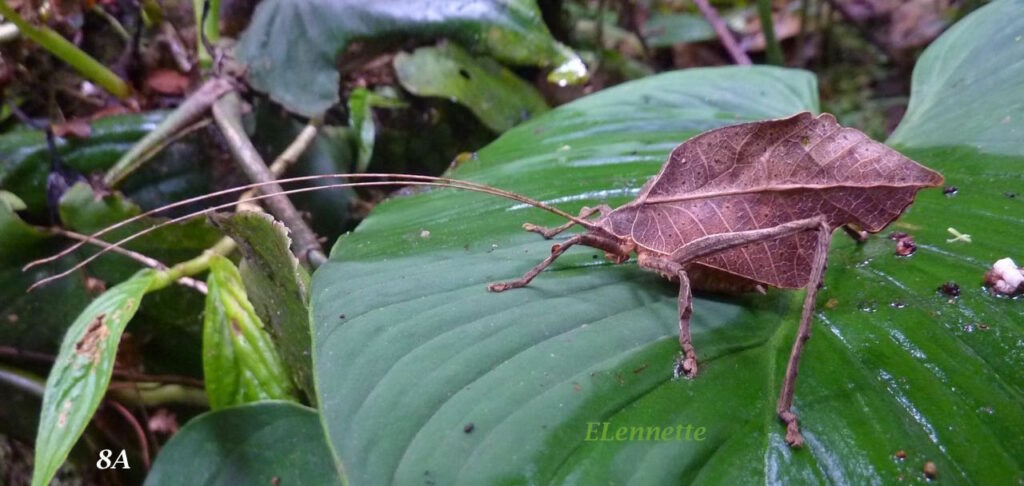
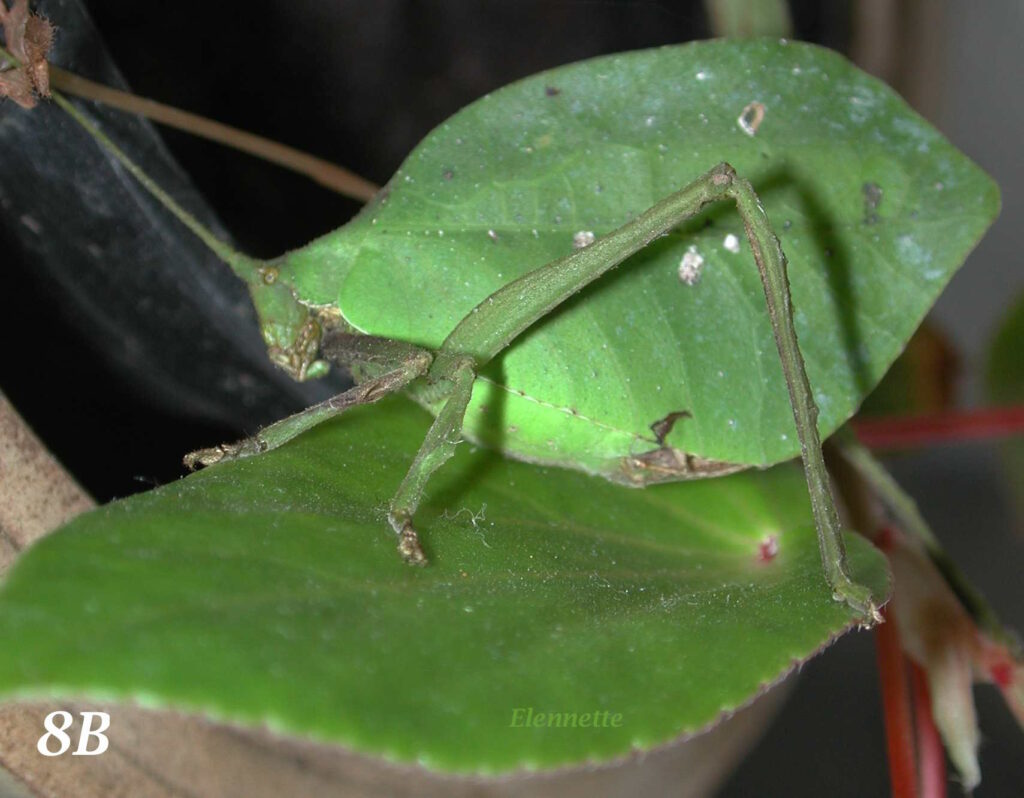
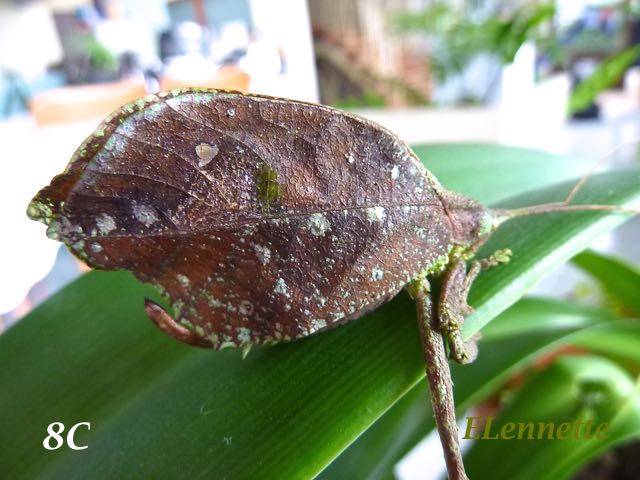
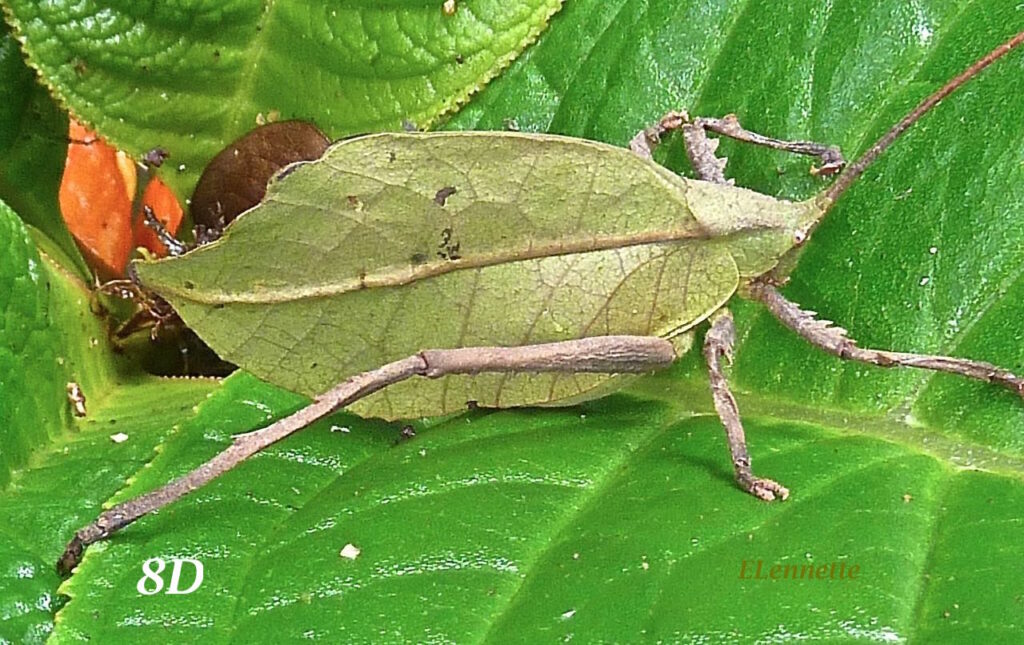
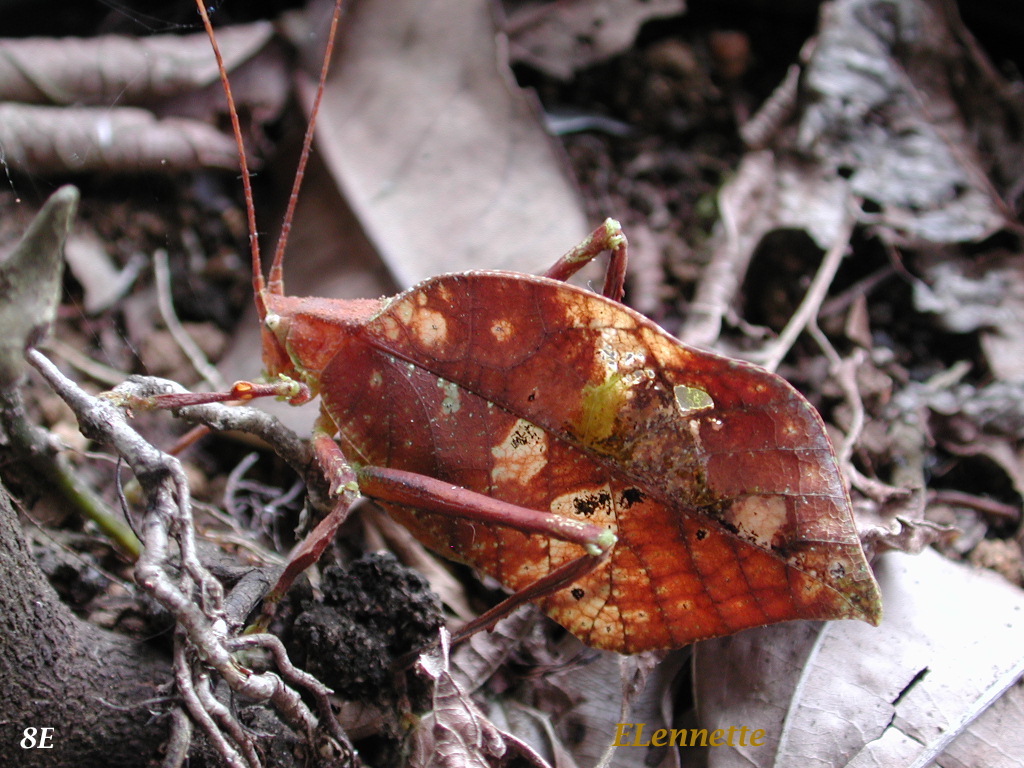
Fig. 8A – 8E. Leaf katydids
Katydid wings mimics foliage not just in color, but in textures and astoundingly plant-like ribbing, complete with imitation chewed marks, cracking, and other leafy imperfections and discoloration. This pair of wings was recognized as insect wings (Fig 9) only because they were found attached to the remains of katydid and were exact mirror images of each other — an impossible floral occurrence !
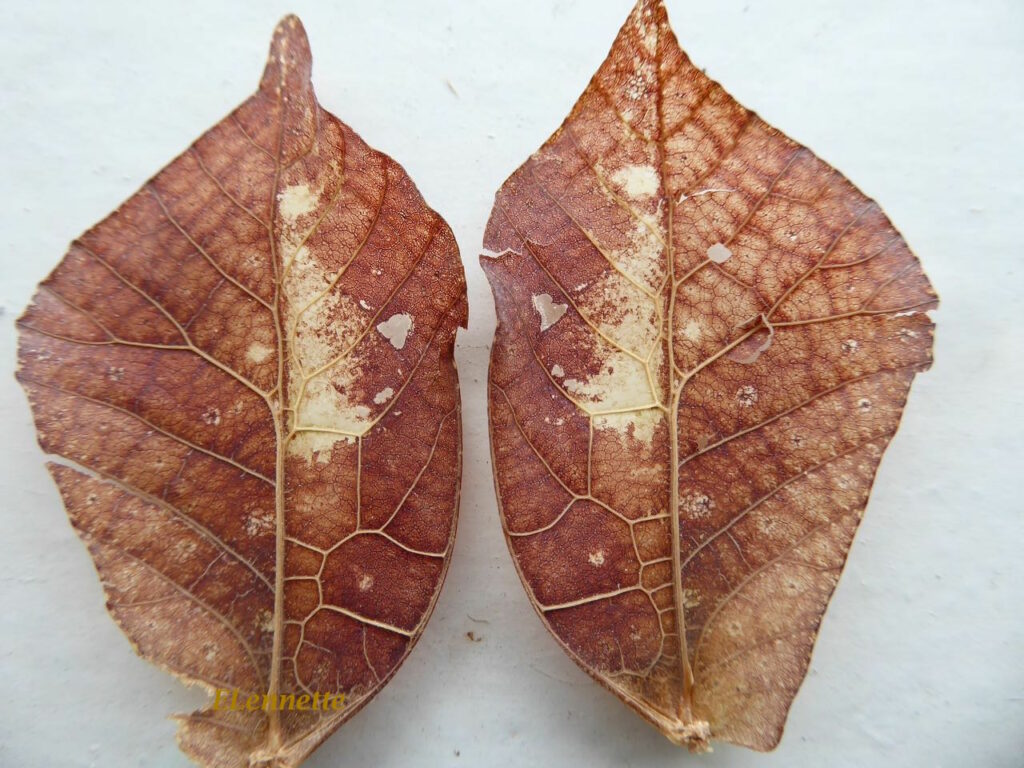
Mostly green and brown in color, a rare recessive genetic mutation in katydids result in shocking pink katydids (Fig 9 A). Thus far, nothing is known about the survival (dis)advantages of the spectacular pink katydids.
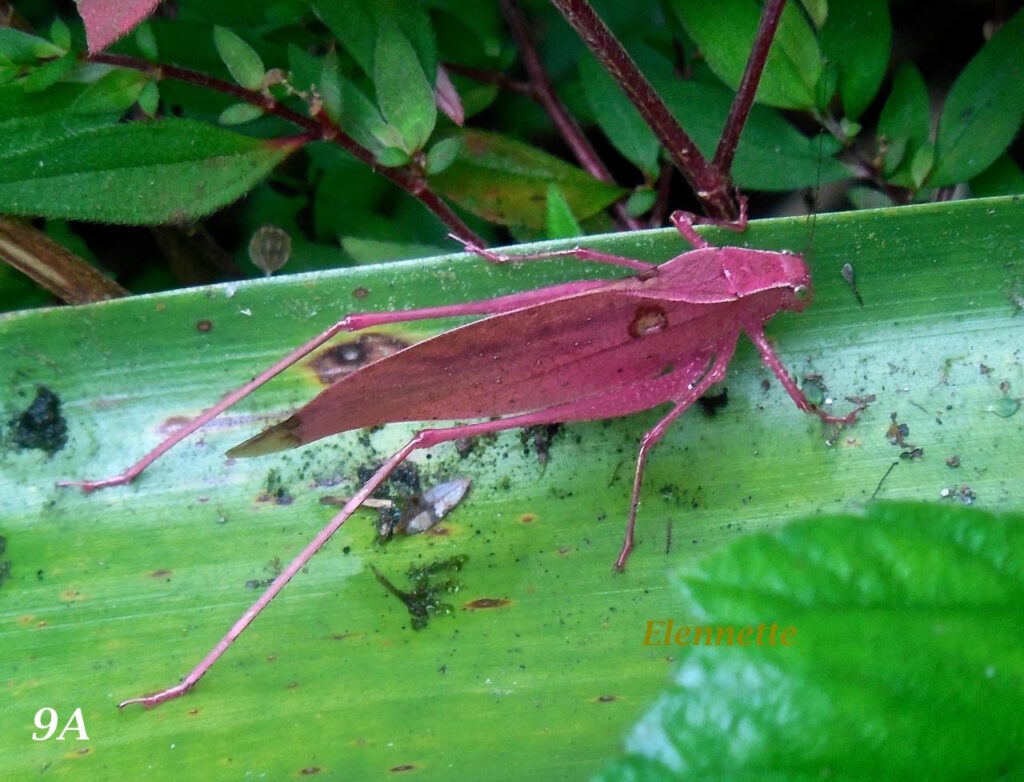
Fig. 9A Pink katydid . The shocking pink color is the result of a recessive gene mutation.
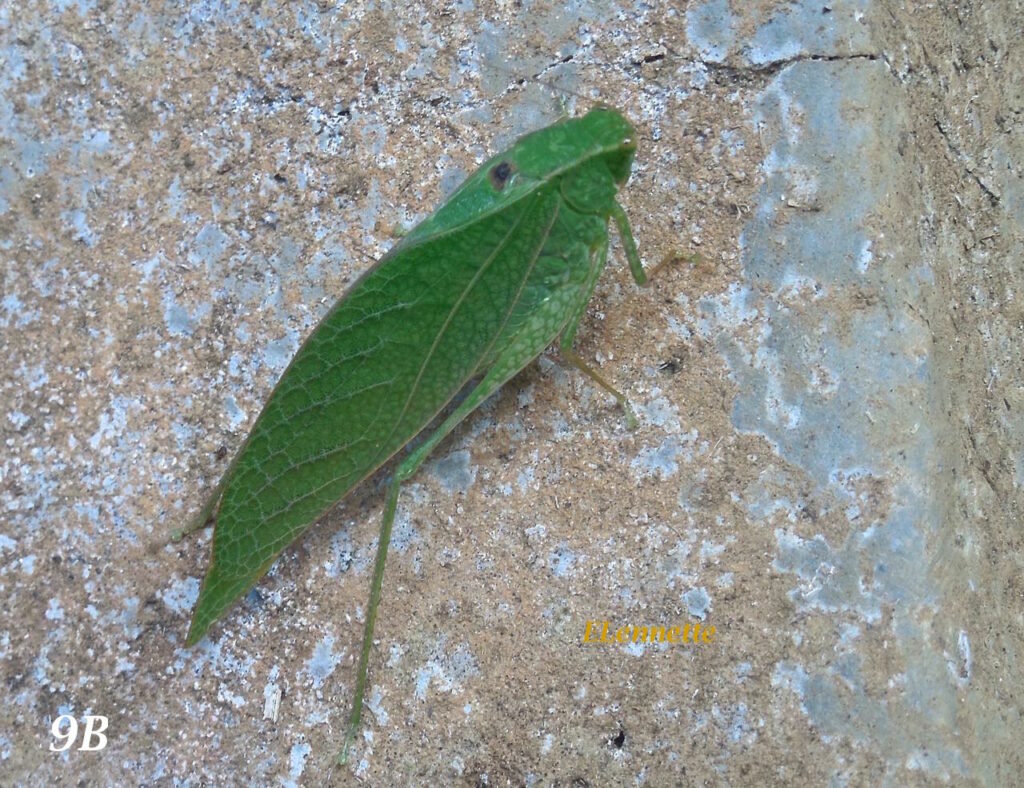
Fig. 9B Lesser angled-wing katydid normal green variant.